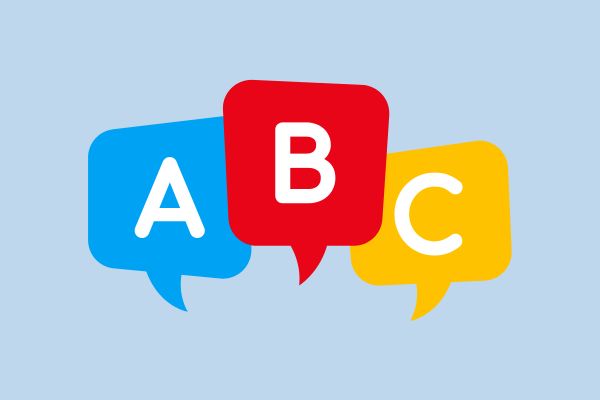Mastering the Rules of Spelling: A Comprehensive Guide

Spelling is an essential aspect of effective communication, allowing us to convey our thoughts clearly and accurately. Correct spelling enhances the overall quality of writing and improves the reader’s comprehension.
In this article, we will explore the fundamental rules of spelling, providing a comprehensive guide to help readers become proficient spellers.
1. Mastering Phonetics
Phonetics, the study of the sounds of human speech, lays the foundation for understanding spelling rules. Understanding the relationship between sounds and letters is crucial for spelling correctly. The English language, in particular, can be challenging due to its diverse phonetic patterns. Learning to associate sounds with their corresponding letters and letter combinations is the first step in becoming a proficient speller.
2. Understanding Basic Spelling Rules
2.1. “I” before “e,” except after “c”
One of the most well-known spelling rules in British English states that when the sound /ee/ is followed by a consonant, we usually spell it as “ie.” However, if the sound /ee/ is preceded by the letter “c,” we spell it as “ei.” For example, “believe” and “ceiling.”
2.2. Silent “e”
Adding an “e” at the end of a word often changes the preceding vowel from a short vowel sound to a long vowel sound. For instance, “bit” becomes “bite,” and “hop” becomes “hope.”
2.3. Doubling Final Consonants
When adding suffixes to words, we double the final consonant if the word has a single vowel followed by a single consonant. For example, “run” becomes “running,” and “fit” becomes “fitting.”
3. Mastering Common Spelling Patterns
3.1. “C” and “K” Sounds
The letter “c” typically makes a /k/ sound when followed by the vowels “a,” “o,” or “u.” On the other hand, it makes an /s/ sound when followed by “e,” “i,” or “y.” For example, “cat,” “cot,” “cut,” “cent,” “city,” and “cycle.”
3.2. “G” and “J” Sounds
Similar to the letter “c,” “g” makes a /g/ sound when followed by the vowels “a,” “o,” or “u,” but it makes a /j/ sound when followed by “e,” “i,” or “y.” For example, “gap,” “got,” “gut,” “gem,” “gin,” and “gym.”
3.3. Soft and Hard “C” and “G”
The letters “c” and “g” can have both soft and hard sounds. When “c” is followed by “e,” “i,” or “y,” it has a soft /s/ sound, as in “cease” and “cinnamon.” However, when followed by “a,” “o,” or “u,” it has a hard /k/ sound, as in “cat” and “cork.” Similarly, “g” followed by “e,” “i,” or “y” has a soft /j/ sound, as in “giant” and “giraffe,” while it has a hard /g/ sound when followed by “a,” “o,” or “u,” as in “game” and “goat.”
3.4. The “gh” Predicament
The letter combination “gh” in British English can be perplexing, as it can have various pronunciations, such as /f/ in “enough,” /g/ in “ghost,” or silent in “light.”
4. Spelling Irregularities
Despite numerous spelling rules and patterns, British English still contains many irregular words that do not follow any specific guidelines. Some examples include “said,” “was,” “friend,” and “one.” Memorisation and exposure to these words in context are essential for spelling them correctly.
5. Compound Words
When two words combine to form a new word, it can create confusion in spelling. Sometimes they are joined together, such as “football” or “mailbox.” In other cases, they are hyphenated, like “well-known” or “self-esteem.” Additionally, certain compounds are written as separate words, such as “ice cream” or “high school.” Understanding the distinctions between these different types of compound words is vital for accurate spelling.
6. Homophones and Homographs
Homophones are words that have the same pronunciation but different meanings and spellings, such as “their” and “there” or “flower” and “flour.” Homographs, on the other hand, are words that are spelt the same but may have different pronunciations and meanings, like “tear” (a drop of water) and “tear” (to rip). Learning the distinctions between homophones and homographs is essential for avoiding spelling errors in writing.
7. Other Points
Here are some additional spelling rules that could be considered as part of a comprehensive guide:
- Silent Letters: The English language contains many words with silent letters, such as the “k” in “knight” or the “p” in “psychology.” Understanding when certain letters are silent is crucial for accurate spelling.
- Plurals: Rules for forming plural nouns, such as adding “-s,” “-es,” or changing the spelling entirely (e.g., “child” to “children”).
- Possessives: The rules for forming possessive nouns, including the use of apostrophes (e.g., “cat’s toy” or “children’s books”).
- Prefixes and Suffixes: Understanding how prefixes (e.g., “un-,” “re-,” “pre-“) and suffixes (e.g., “-ful,” “-less,” “-er”) affect the spelling of base words.
- Word Endings: Rules for words ending in “-tion,” “-sion,” “-ible,” “-able,” and more.
- Spelling of Homophones: Covering more examples of homophones and the importance of context in determining their correct spelling.
- Capitalisation: Rules for when to capitalize words, such as proper nouns, the first word of a sentence, and titles.
- Hyphenation: More examples of when to use hyphens in compound words and phrases.
- Accented Syllables: Understanding how syllable stress can affect spelling, particularly with suffixes.
- Commonly Misspelled Words: A list of words that are frequently misspelt and tips for remembering their correct spelling.
Calling all law aspirants!
Are you exhausted from constantly searching for study materials and question banks? Worry not!
With over 15,000 students already engaged, you definitely don't want to be left out.
Become a member of the most vibrant law aspirants community out there!
It’s FREE! Hurry!
Join our WhatsApp Groups (Click Here) and Telegram Channel (Click Here) today, and receive instant notifications.





